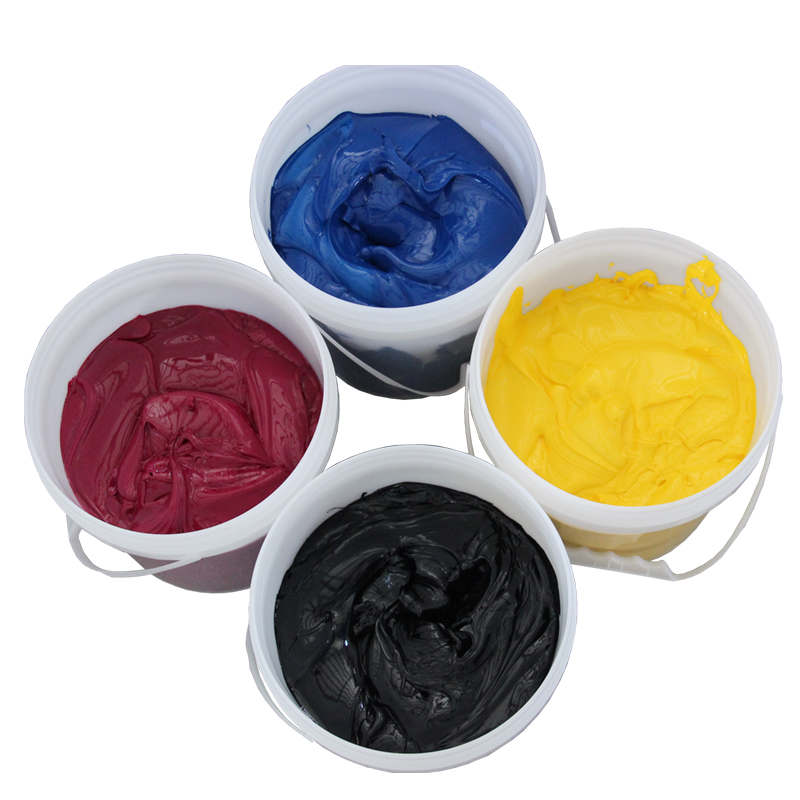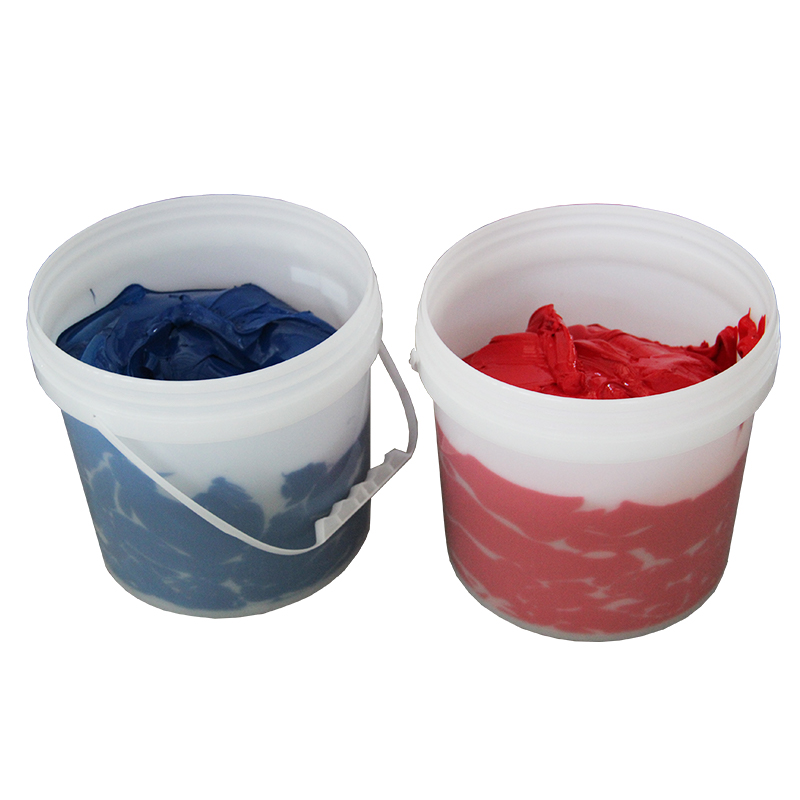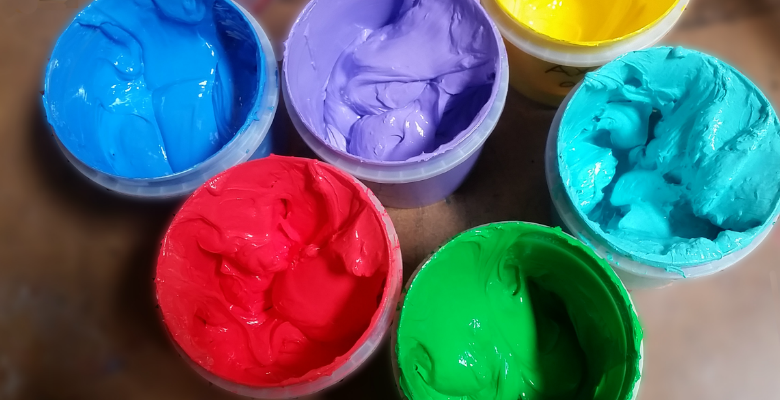screen printing has long been a favored technique for creating vibrant, long-lasting designs on various materials. One of the key elements that contribute to the success of screen printing is the choice of ink. Plastisol ink, known for its versatility and durability, has become a popular option in the industry. In this article, we will explore the characteristics of plastisol ink, its method of application, and the advantages it offers in the world of screen printing.
Understanding Plastisol Ink
Plastisol ink is a type of screen printing ink composed of PVC particles suspended in a plasticizing emulsion. Unlike water-based or solvent-based inks, plastisol ink does not dry through evaporation. Instead, it cures or solidifies when exposed to high temperatures. This unique property allows for greater control during the printing process, as the ink remains wet on the screen until heat is applied.
Method of Application
1. Preparing the Screen: Start by preparing the screen for printing. Coat the screen with emulsion, expose it to UV light using a film positive of the desired design, and wash away the unexposed emulsion to create the stencil.
2. Mixing and Preparing the Ink: Plastisol ink typically comes in a range of vibrant colors. Before use, thoroughly mix the ink to achieve a consistent texture and ensure even distribution of the pigments. Some inks may require additives or thinners to achieve the desired viscosity.
3. Loading the Screen: Place the prepared screen onto the printing press. Apply a generous amount of plastisol ink onto one end of the screen and use a squeegee to evenly distribute the ink across the design area, making sure to apply sufficient pressure to push the ink through the stencil.
4. Printing the Design: Once the ink is evenly distributed, use the squeegee to make a firm, smooth pass across the screen, transferring the ink onto the substrate. Repeat the process for each print, ensuring consistent pressure and ink coverage.
5. Curing the Ink: After printing, the ink needs to be cured to achieve durability and permanence. Plastisol ink requires exposure to high temperatures, typically around 320°F (160°C), using a heat press or conveyor dryer. The heat cures the ink, creating a strong bond with the substrate.

Advantages of Plastisol Ink
Vibrant and Opaque: Plastisol ink offers excellent color vibrancy and opacity, resulting in bold and eye-catching prints. The ink sits on top of the substrate, creating a smooth, opaque finish even on dark or colored fabrics.
1.Durability: Once cured, plastisol ink forms a strong bond with the substrate, ensuring long-lasting prints that can withstand repeated washings and wear. This makes it an ideal choice for garments, accessories, and other items subject to frequent use.
2.Versatility: Plastisol ink can be used on various materials, including cotton, polyester, blends, and even rigid surfaces like paper and wood. Its versatility allows for a wide range of applications, from apparel and promotional products to art prints and signage.
3.Easy to Work With: Plastisol ink has a forgiving nature, making it suitable for both beginners and experienced screen printers. Its longer open time on the screen allows for adjustments and multiple prints without drying out, reducing the risk of clogged screens.
Plastisol ink continues to be a go-to choice for screen printers due to its vibrant colors, durability, and versatility. When paired with the Epson L1800 printer, transfer paper, and the right techniques, plastisol ink enables stunning, long-lasting designs on various substrates. By understanding the application method and harnessing the advantages of plastisol ink, screen printers can unleash their creativity and produce high-quality prints with ease.
When using plastisol ink with the Epson L1800 printer, it is important to ensure that the printer is compatible with screen printing applications. While the Epson L1800 is primarily designed for wide-format printing, it can be adapted for screen printing by utilizing specialized attachments and modifications.

To achieve optimal results with plastisol ink and the Epson L1800 printer, consider the following tips
1. Proper Ink Selection: Choose plastisol inks specifically formulated for screen printing. These inks are designed to cure at the appropriate temperatures and provide the desired finish and durability.
2. Screen Preparation: Prepare the screen by properly coating it with emulsion and creating a stencil using a film positive of the design. Ensure that the screen is properly tensioned and aligned on the printing press.
3. Ink Mixing and Consistency: Thoroughly mix the plastisol ink to achieve a consistent texture and color. Properly mixed ink ensures even ink distribution and prevents issues such as ink clogs or inconsistencies in the print.
4. Squeegee Selection and Technique: Use a squeegee appropriate for the ink and substrate being used. The squeegee should provide sufficient pressure to transfer the ink through the screen and onto the substrate. Experiment with different angles and pressure to find the optimal printing technique.
5. Curing Process: Proper curing is essential for achieving durability and wash-fastness with plastisol ink. Ensure that the cured prints are exposed to the recommended temperature and duration specified by the ink manufacturer. Utilize a heat press or conveyor dryer to apply consistent heat across the print area.
6. Test Prints and Adjustments: Before proceeding with a full production run, conduct test prints on sample substrates to ensure that the ink, color, and curing process are achieving the desired results. Make adjustments as needed to achieve optimal print quality.
By following these guidelines and experimenting with different techniques and settings, screen printers can harness the power of plastisol ink and the Epson L1800 printer to create stunning, durable prints that showcase their artistic vision.
In conclusion, plastisol ink offers screen printers a versatile and reliable option for vibrant, long-lasting prints. When used in conjunction with the Epson L1800 printer, screen printers can achieve exceptional results with ease. By understanding the method of application and employing best practices, artists and businesses can unlock their creativity and produce professional-grade prints that leave a lasting impression.
Embrace the power of plastisol ink and the Epson L1800 printer to take your screen printing projects to new heights. Let your imagination soar and create designs that captivate and inspire.

